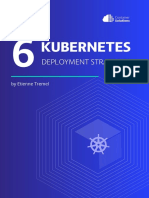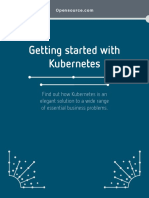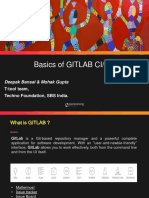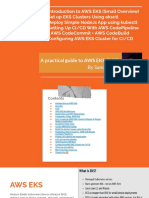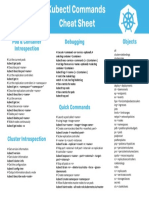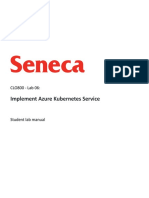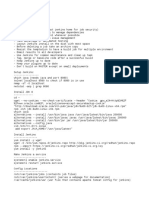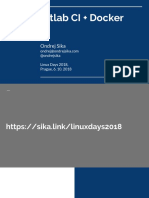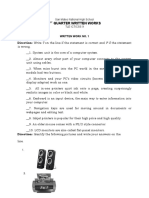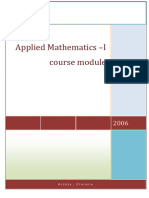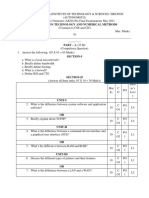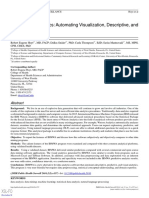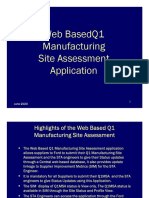Advanced Git and
Gitlab
Tony Wildish!
Dan Udwary
May 30, 2017
- 1 -
Advanced Gitlab
• Prerequisites
• Branching and Tagging
• Building mul<ple containers
• Pushing images to mul1ple repositories
• Using metadata in containers
• Deploying runners on NERSC hosts
• Best prac<ces & recommenda<ons
• => Get the code for this tutorial:
– Fork the tutorial repository, then clone your fork to your laptop
– h@ps://gitlab.com/TonyWildish/gitlab-advanced/
- 2 -
Prerequisites
• Familiarity with git, docker, gitlab
– Git, version 2.11 or higher
– Docker, version 1.12.3 or higher
– An account on gitlab.com
• Earlier tutorials:
– h@ps://www.nersc.gov/assets/Uploads/Git+Docker-Tutorial-Dec01-2016.pdf
• Do exercises 4 and 5
– h@ps://www.nersc.gov/assets/Uploads/2017-02-06-Gitlab-CI.pdf
• Do the first exercise
h@ps://gitlab.com/TonyWildish/gitlab-advanced/
- 3 -
Bonus gitlab tip: Notification emails
Go to your account seXngs,
No1fica1ons, Custom
- 4 -
Bonus gitlab tip: Notification emails
Choose any/all fields,
can set per-project too
- 5 -
Branching and tagging
• Branches
– Allow parallel development in a single repository
– Create branches as needed, delete when obsolete
– Can merge branches if you like, or keep forever
• Bugfix branches: merge, delete the branch “Pro Git”, by
Sco@ Chacon,
• Feature branches: keep forever. Chapter 3
– Can merge back & forth to control divergence
Master
Feature1
Bugfix1
- 6 -
Branching and tagging
• Tags
– Sta1c label, iden1fies a par1cular commit
– Easily recover par1cular version at any 1me in future
– Once pushed, tags shouldn’t be deleted or moved!
Tag1 Tag2
Master
Feature1
Tag3 Tag4
Bugfix1
- 7 -
Branching and tagging
• Tags and branches in gitlab
– Can be used to iden1fy build products, label images etc
• If there’s a tag, use that
• If not, use the branch name
• ‘master’ branch -> ‘latest’ docker version (by conven1on)
– Let’s do exercise 01!
h@ps://gitlab.com/TonyWildish/gitlab-advanced/
- 8 -
Working with forked repositories
• How do you keep a forked repository up to date?
– Add the original source as another ‘remote’ repository
> git clone git@bitbucket.org:TWildish/jgi-lapinpy.git
Cloning into 'jgi-lapinpy'...
[…]
> cd jgi-lapinpy/
> git remote add upstream git@bitbucket.org:berkeleylab/jgi-lapinpy.git
> git remote -v show
origin git@bitbucket.org:TWildish/jgi-lapinpy.git (fetch)
origin git@bitbucket.org:TWildish/jgi-lapinpy.git (push)
upstream git@bitbucket.org:berkeleylab/jgi-lapinpy.git (fetch) “Pro Git”, by
upstream git@bitbucket.org:berkeleylab/jgi-lapinpy.git (push) Sco@ Chacon,
Sec1on 2.5
> git pull upstream master
From bitbucket.org:berkeleylab/jgi-lapinpy
* branch master -> FETCH_HEAD
Upda1ng a3f5e1e..03943c8
Fast-forward
- 9 -
Working with forked repositories
• How do you keep a forked repo up to date?
– Add the original source as another ‘remote’ repository
> git clone git@bitbucket.org:TWildish/jgi-lapinpy.git
Cloning into 'jgi-lapinpy'...
[…]
> cd jgi-lapinpy/
> git remote add upstream git@bitbucket.org:berkeleylab/jgi-lapinpy.git
> git remote -v show
origin git@bitbucket.org:TWildish/jgi-lapinpy.git (fetch)
origin git@bitbucket.org:TWildish/jgi-lapinpy.git (push)
upstream git@bitbucket.org:berkeleylab/jgi-lapinpy.git (fetch) “Pro Git”, by
upstream git@bitbucket.org:berkeleylab/jgi-lapinpy.git (push) Sco@ Chacon,
Sec1on 2.5
> git pull upstream master
From bitbucket.org:berkeleylab/jgi-lapinpy
* branch master -> FETCH_HEAD
Upda1ng a3f5e1e..03943c8
Fast-forward
- 10 -
Building multiple containers
• Suppose you have a par<cular package with:
– A few core dependencies, very small total
– Several op1onal extras that add hundreds of MB
• How do you build an op<mal container?
– Include everything -> baggage that not all users need
– Leave stuff out -> don’t sa1sfy all users
• Solu<on:
– Build two containers (or more) in the same repository
h@ps://gitlab.com/TonyWildish/gitlab-advanced/
- 11 -
Building multiple containers
• Gitlab supports building Docker images with names
other than the repository name
– Default Docker name structure
• $REGISTRY_USER/$APPLICATION:$RELEASE_TAG
– Extended syntax:
• $REGISTRY_USER/$APPLICATION/real-name:$RELEASE_TAG
– Use extended syntax repeatedly in .gitlab-ci.yml, with
different ‘real-name’s
– “myapp-lite” & “myapp”, or “myapp” & “myapp-full”
– See exercise 02!
h@ps://gitlab.com/TonyWildish/gitlab-advanced/
- 12 -
Pushing images to multiple repositories
GITLAB and SHIFTER
variables point to
different registry hosts
h@ps://gitlab.com/TonyWildish/gitlab-advanced/
- 13 -
Pushing images to multiple repositories
Build and push
to GITLAB
Re-tag, push to
SHIFTER
h@ps://gitlab.com/TonyWildish/gitlab-advanced/
- 14 -
Pushing images to multiple repositories
• Caveat: Security!
– Gitlab hands you a login-token for every build
– For shiser, once you’re inside the firewall, there’s no
authen1ca1on needed, so no token
– Anywhere else, you probably need a token or password,
but where do you store it?
• Can’t be in the repository, is too visible
• Has to be in the runner run1me environment somehow
• Can do this in SPIN, though not very securely at the moment
• Can do it on your laptops
• Want to do it elsewhere? come for a chat
– Exercise 03, in your own 1me J
h@ps://gitlab.com/TonyWildish/gitlab-advanced/
- 15 -
Using metadata in containers
• Pass informa<on from the build environment
– To the image, or to the user at run1me Thank
s Mich
ael, A
lex
• Tell the user anything they might want to know:
– What run1me environment the sosware needs
– What level of tes1ng, cer1fica1on has been performed
– Pointers to documenta1on, source code, maintainers…
– Run1me details:
• where the container looks for input
• where it expects to be able to put output…
h@p://docs.master.dockerproject.org/v1.5/userguide/labels-custom-metadata/
h@ps://speakerdeck.com/garethr/shipping-manifests-bill-of-lading-and-docker-metadata-and-container
- 16 -
Using metadata in containers
Development environment docker build … --build-args XYZ=123
How metadata goes from the build
Build context (docker daemon) environment to the image, and to
(ARG XYZ=$XYZ) the running container
See Dockerfile.metadata in the repo
Docker image
(LABEL XYZ=$XYZ) docker inspect … | grep XYZ
Run1me environment (container) docker run… echo $XYZ
(ENV XYZ=$XYZ)
h@ps://gitlab.com/TonyWildish/gitlab-advanced/
- 17 -
Using metadata in containers
• How can we use metadata?
– E.g. defining a proper ontology
– Automa1ng pipelines, tes1ng, discovery…
• Working group(?) to inves<gate this
– Probably later in the year aser the migra1on
– Volunteers/sugges1ons gratefully accepted!
– Exercise 04!
h@ps://gitlab.com/TonyWildish/gitlab-advanced/
- 18 -
Deploying runners on NERSC hosts
• A runner at NERSC with write-access to $HOME etc?
• You can do this, but there are serious risks involved!
– Don’t share the runner registra1on token with anyone
• ~= giving them your NERSC password
– Don’t give other users master-level access to your repository
– Consider alterna1ves:
• Use a Docker image, with your custom build environment, on SPIN
• Use a VM somewhere…
– Talk to a consultant before a@emp1ng this!
– Some of these risks are gitlab-specific
– Some are inherent in running any internet-enabled services
h@ps://gitlab.com/TonyWildish/gitlab-advanced/
- 19 -
Deploying runners on NERSC hosts
• Basic recipe
– Download the binary for a gitlab runner
– Register it, give it a host-specific config file
– Give it specific tags when registering, to iden1fy it
– Use those tags in your .gitlab-ci.yml file
– Your pipeline can roam over the en1re filesystem if you
want, but it’s up to you then to ensure the directories you
use are clean
– See exercise 05 for details – we won’t do this today!
h@ps://gitlab.com/TonyWildish/gitlab-advanced/
- 20 -
Other gitlab features
• API, programmable interface to Gitlab
– h@ps://docs.gitlab.com/ee/api/
• See JGI/gitlab-cli-tools repo for some basic tools, contribu1ons welcome!
• Build hooks
– Trigger ac1ons on external services other than gitlab
• Similar capabili1es on github, bitbucket
– Trigger ac1ons in gitlab from external service
• E.g. nightly build, regardless of commits
• Mirroring repositories
– Master repository in bitbucket/github?
– Can mirror to gitlab, automa1cally, transparently
• Issue-tracking, wiki…
– Other goodies come for free with gitlab, as with other hos1ng services
- 21 -
Best practices, recommendations
• Git:
– Use the fork/pull-request model instead of gran1ng
people direct-commit access to your repository
– Use branches to experiment, try out bugfixes etc
• Merge long-lived branches frequently to control divergence
– Use tags to iden1fy stable versions, releases etc
– Don’t delete or move tags once they’re pushed to the
master repository
h@ps://gitlab.com/TonyWildish/gitlab-advanced/
- 22 -
Best practices, recommendations
• Gitlab:
– Build mul1ple Docker images if you have different use-
cases to serve from the same code-base
– Pushing to mul1ple registries lets users access your images
from many places, easily
– Use metadata in your containers!
• Help us establish standards for JGI container metadata
– Control access to your repositories
• Don’t give out the runner-registra1on token
• Avoid giving others admin/developer-access to the project
• Think twice before deploying runners on NERSC resources
h@ps://gitlab.com/TonyWildish/gitlab-advanced/
- 23 -
Finally…
• You’re all experts now, so update your resumes!
– “experience building and op1mizing Docker images for
bioinforma1c sosware”
– “experience configuring and using con1nuous-integra1on
pla~orms, such as gitlab, to automate building and deploying
sosware”
– “in-depth understanding of best-prac1ces for sosware
management, such as version control with git and use of
metadata to describe Docker images”
– “understanding of git workflow models for teams, including the
use of branches, tags, and developer access-control”
h@ps://gitlab.com/TonyWildish/gitlab-advanced/
- 24 -
National Energy Research Scientific Computing Center
- 25 -



